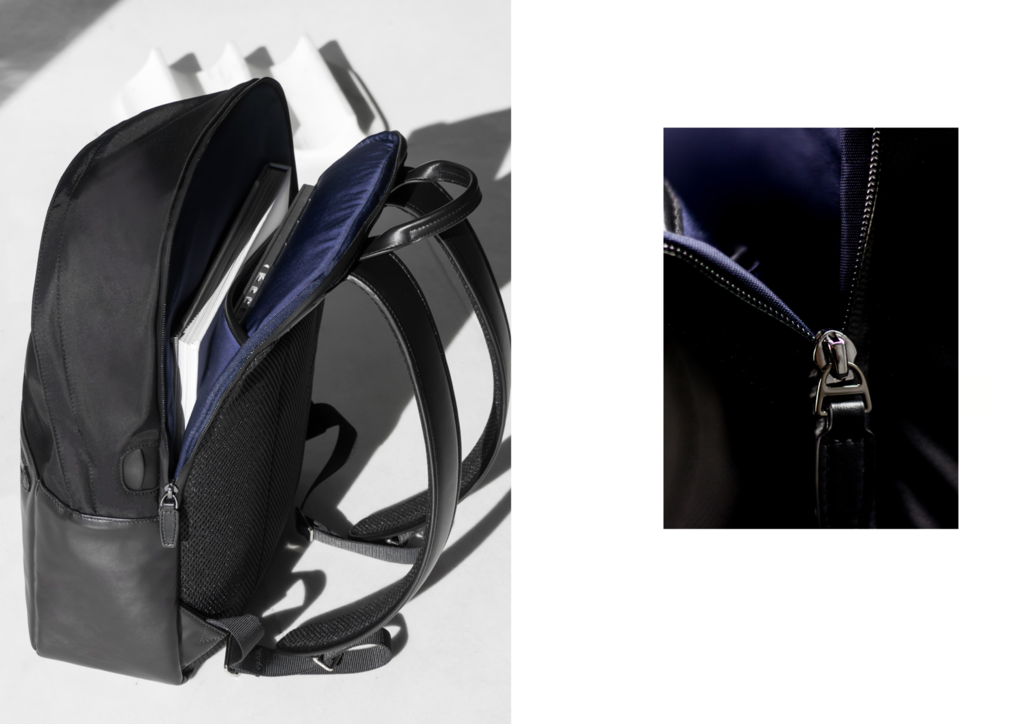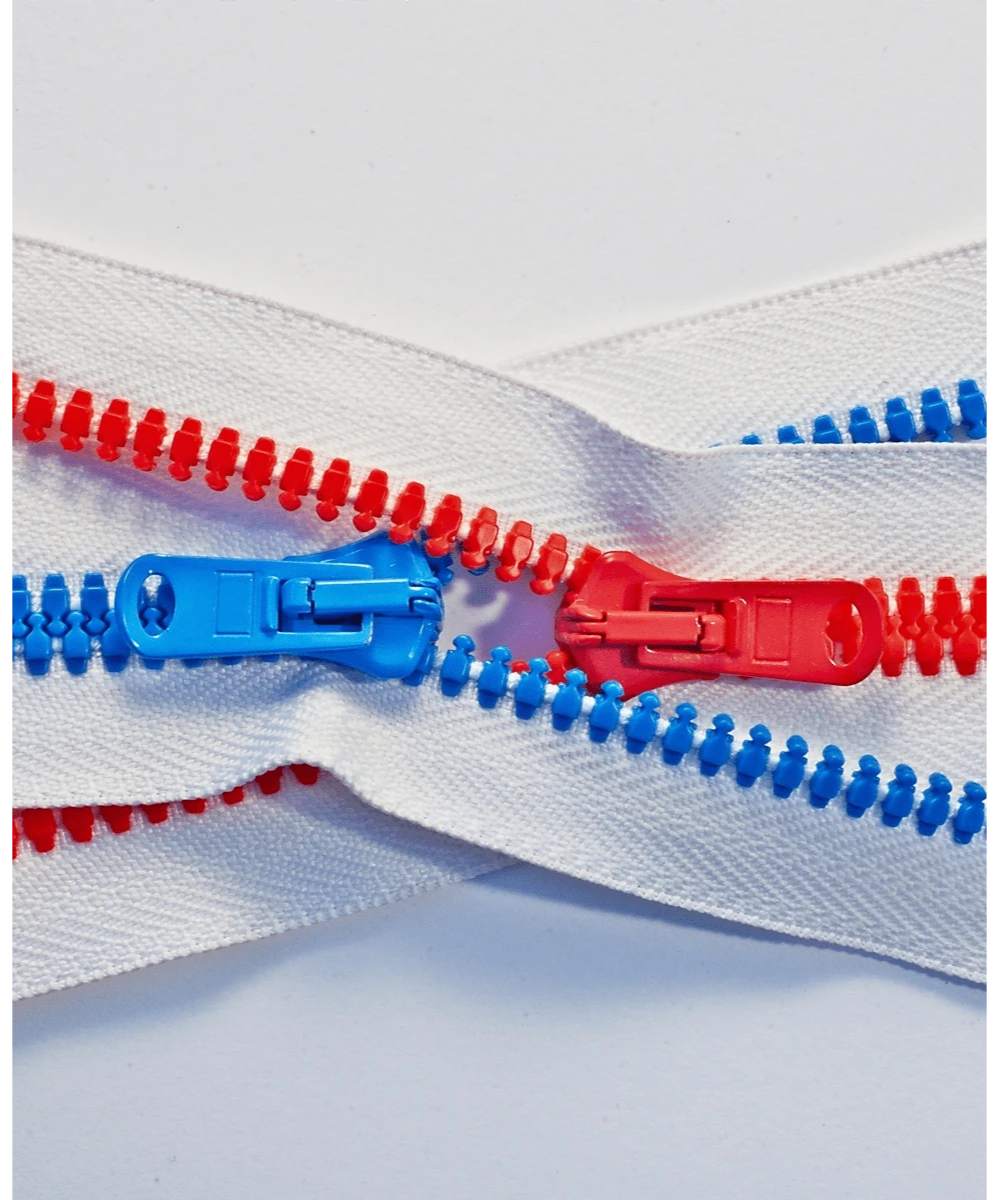
The story of how the zipper came to be and its rise to the top of the clothing industry is a surprisingly complicated one.
Elias Howe, the inventor of the sewing machine, was the first to patent the idea for a “continuous clothing closure” in 1851, but the popularity of the sewing machine prevented him from investing in the venture.
It wasn’t until Whitcomb L. Judson set out to save the world from the tedious task of buttoning their boots each morning that the concept of the zipper was pursued.
Originally named the Clasp Locker, Whitcomb L. Judson’s design consisted of two rows of hook and eye fasteners with a slider. However, the original slider was poorly designed and rejected by the public. Judson improved on his design by stamping the metal clasps onto fabric first which made it easier to fasten, but the new design continued to pop open unexpectedly and never found commercial success.
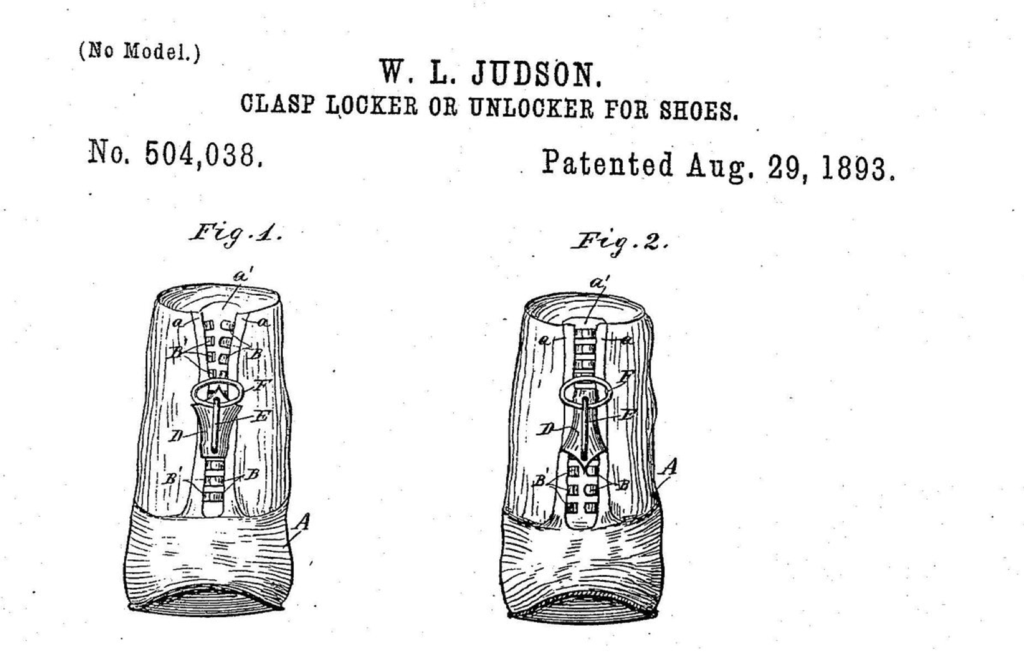
The original Patent for the zipper that Judson received in 1893 (Photo: Wikimedia)
WHO INVENTED THE MODERN ZIPPER?
What we are familiar with today as the modern zipper, was finally created by Gideon Sunbeck in 1914. Sunbeck, an engineer from Sweden, was working for the Westinghouse Electric Corporation on the Niagra Falls project when he was first approached by Peter Aronson of the Automatic Hook and Eye Company.
Why would Sunbeck leave such an established position for a lesser known company with no foreseeable future?
While visiting the Automatic Hook and Eye Company, Sunbeck met Aronson’s daughter, Elvira. Sunbeck was smitten and joined the company in an effort to gain her favor.
Automatic Hook and Eye Company moved to Meadville, Pennsylvania, where they went to work on the modern day zipper under the creative engineering of Sunbeck.
He also went on to eventually marry Elvira. Even in the very beginning, the story of the zipper had a thread of romance and sexuality that still flows through it today.
Sunbeck’s design consisted of two rows of interlocking teeth brought together by a slider that works similarly to how a Ziplock bag works.
However, this model, named Hookless No. 1, still had some kinks to work out: It was costly to make and quite impractical due to its wear and tear on the fabric.

The Hookless No. 1 patent by Sunbeck, it was the first zipper that had interlocking teeth like in the zippers we use today. (Photo: Hoboken Historical Museum)
Sunbeck continued to work on the design, focusing on creating something easy to use and affordable to make in bulk.
What he came up with is what we now know as the modern zipper.
WHEN WAS THE ZIPPER FIRST USED?
The new zipper model was first used by the U.S Army on money belts for soldiers during World War I. After the war, it found initial commercial success when it was used as a fastener for tobacco pouches.
The second design was simply named Hookless No. 2 until the onomatopoeia loving marketing team at the B.F Goodrich Company released the Zipper Boot in 1923, which received its name after the noise it made when zipped up.
For the first time, the zipper was fashionable and highly coveted by those who could afford the new revolutionary footwear.
While the zipper had become common on boots and pouches, due to the harsh metal components, a tendency to get stuck, and rust, it was not a popular addition to clothing until the introduction of the plastic zipper in the 1930s.
Even then, metal zippers were sometimes used for men’s trousers, but any material zipper was considered inappropriate for women due to the insinuation that the clothing would be too easy to remove should the need arise.
The undergarment industry still tried to use zippers, especially for corsets but was met with resistance by groups who found the zipper vulgar. In the rare case where a zipper was used on a women’s dress, it was usually concealed behind a fold to avoid controversy.
Daring designers like Elsa Schiaparelli and Edward Molyneux boldly featured zippers on their fashion pieces in the 1930s and 1940s, sometimes when one was not even necessary, to make a statement and be avant-garde.
In the late 1930s, the U.S military once again adopted the zipper, this time for their uniforms during World War II. More modern plastic zippers were used as there was a high demand for metal during this time. In fact, regulations on the production of metal zippers greatly affected the Automatic Hook and Eye Company, which by this time had changed its name to Talon, Inc.
Once the war ended, Talon was able to return to producing zippers, but the company never fully recovered. The town of Meadville was devastated as the local economy had come to depend on Talon and the factories that employed a majority of the community.
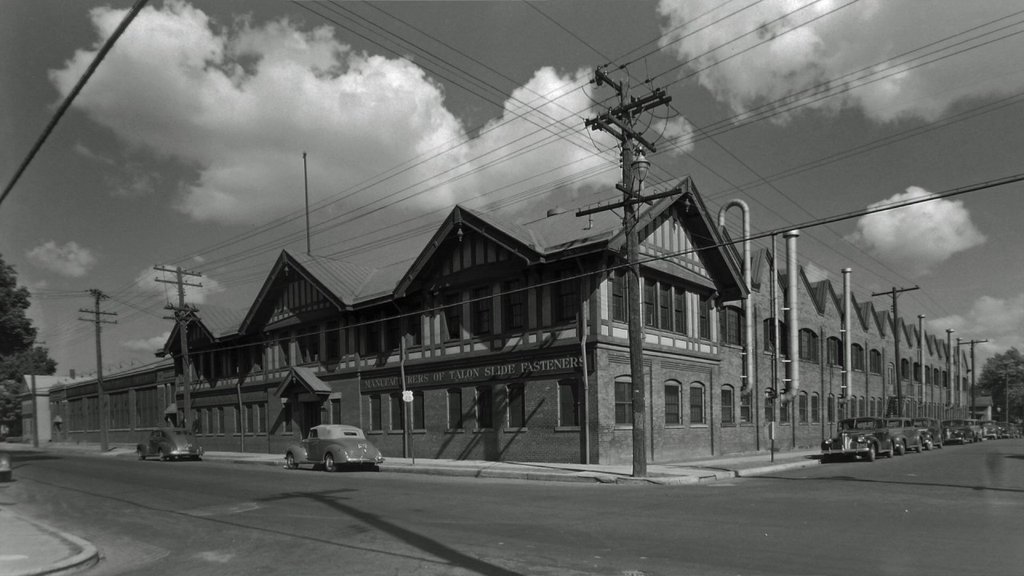
The town of Meadville, Pennsylvania, where the first zippers were produced via mass manufacturing
In spite of a slow start and a rocky past, by the 1940s the zipper could be found all over the world and was especially well received in England, France, and Germany.
WHO SELLS ZIPPERS?
With the zipper’s global popularity came several production competitors, including the company, the YKK Group. Established in Japan in 1934, the small company originally made zippers by hand. In the post-war years, YKK continued to grow, while Talon still struggled to regain the momentum it had before the government regulations interrupted production.
By 1991, the YKK Group had become a global powerhouse and was present in 42 countries. Their international presence and high-quality standards made YKK the leader of the industry.
While one of the early issues with the zipper was its design flaws, YKK took zippers to a new height by improving the design and ensuring consistency. The company built machines specifically designed to make high-quality zippers that are still kept a secret to this day. All manufacturing takes place inside YKK, including the boxes used to ship the zippers.
A zipper can literally make or break a garment, and YKK’s quality control enhanced their dominance in the market as products owners began to depend on their reliability.
YKK also took the zipper industry to new levels by offering a variety of colors, styles, and materials. These new features allowed designers to use zippers in creative new ways.
Riri, a high-quality zipper company, formed in Switzerland in 1936, has also stood the test of time by providing a variety of well-designed zippers at a reasonable cost. Riri is best known for its technically savvy craftsmanship and received the Swiss Technology Award in 2004 for the revolutionary Storm zipper. The Storm zipper is ideal for outdoor and tactical purposes as it is made of a lightweight plastic that is resistant to water and UV rays.
Whether for function or fashion, the zipper is a common feature on a variety of everyday items and led by the YKK Group, it has grown into a 13 billion dollar a year industry. YKK is considered the best in the business, and they produce over seven million high-quality zippers each year.
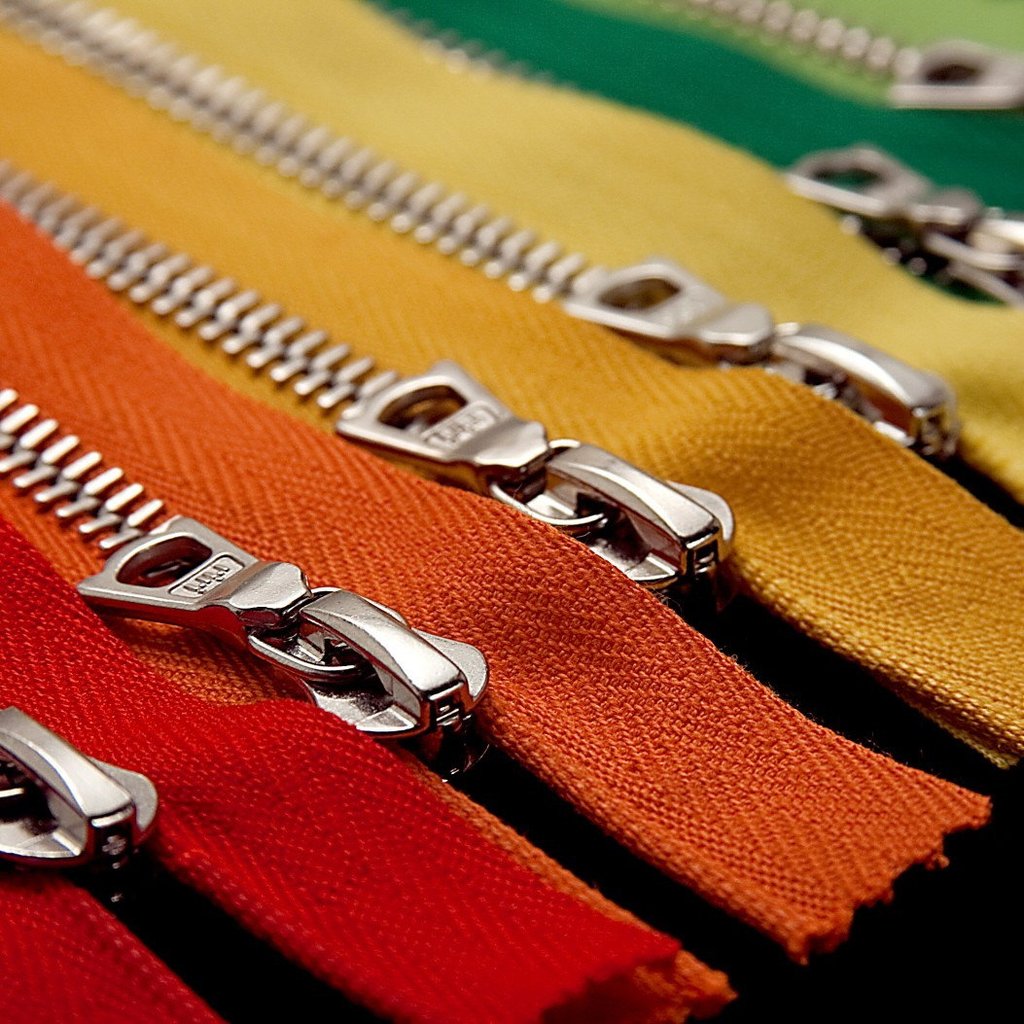
YKK, the leader in zipper manufacturing, changed the industry with its modern design, durability, and ranges of styles
Zippers have become a staple in the fashion industry, and a well-placed zipper can make or break an outfit. A zipper can be used on a piece of clothing to add a sense of strength and sexuality, such as the leather jacket worn by Marlon Brando in The Wild Ones or the fully operational zipper on the cover The Rolling Stone’s album, Sticky Fingers. It can also be used to create a seductive feminine feel, such as a zipper running along the back of an evening gown.
A well-placed zipper causes a delightful juxtaposition between the modern aesthetic look and the primitive curiosity of what hides behind it.
In addition to the fashion world, the zipper has even been to space. Nasa first used them during the Mercury and Gemini space programs, and later for the Apollo mission. The lightweight material and easy to use functionality made zippers an ideal choice when designing the spacesuit.
A QUALITY ZIPPER: WHAT MAKES IT GOOD?
Obviously, astronauts need a great zipper, but the real answer is everyone deserves a fabulous and dependable zipper they can rely on. A great zipper should not only enhance a product but also add security and solidity. Some will even have a waterproof or lock feature.
Zippers not only hold together garments but also hold in our most precious possessions. That is why dependability is key for all pieces but is an especially important feature on handbags, backpacks, and totes.
The significance of the quality of a zipper on a backpack or laptop bag cannot be overstated, especially considering what an everyday bag holds inside and what the zipper protects. Quality craftsmanship is crucial when it comes to laptop backpacks, which is why at ISM, we only use premium YKK zippers from Japan.
